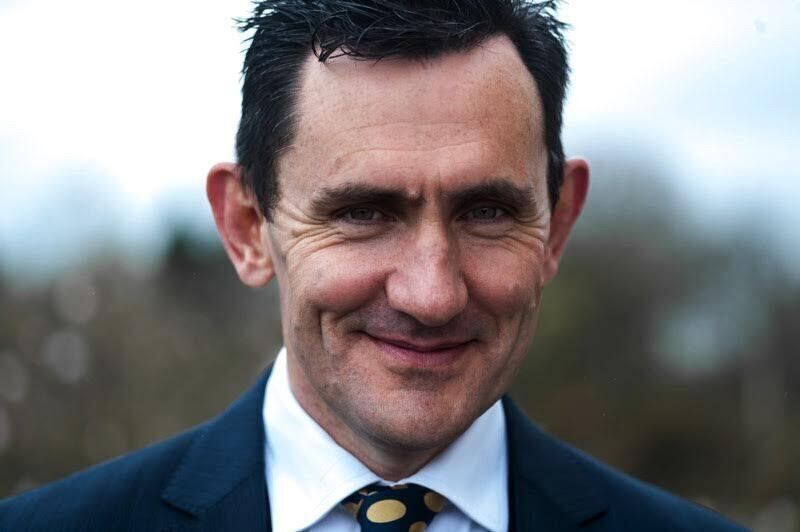Do we need a new model for GP care?

The ESRI said there is already some evidence that general practice is struggling to meet existing demand.
General practice is in trouble. A Cork-based director of Irish College of General Practitioners, Dr Diarmuid Quinlan said earlier this month that between 60 and 80 Cork and Kerry GPs are due to retire within five years.
Perhaps a new model of care is needed.
A recent report on GP supply and demand in Ireland from the Economic and Social Research Institute (ESRI) found that GP retirements in several counties will put services at risk where there is no viable replacement for them.
While the number of training places have improved substantially, increasing from 155 a decade ago to the current figure of 350, this has happened at a time of rapid population growth along with increased life expectancy leading to increasing numbers of people aged 65 and over.

“In 2019, we had 700,000 people aged 65 and over, by the end of 2024 that was 830,000 and we expect it to exceed 1m by 2030,” Dr Quinlan said. Older people, often with multiple medical conditions, play higher demand on GP expertise and GP care.
The ESRI research, funded by the Department of Health, predicts that the demand for GP visits is expected to increase by much as 30% in the next 15 years, with an extra 1,200 doctors needed to keep pace.
The report highlighted that ‘lack of nationally representative and accessible data on general practice presents a major challenge for effective capacity planning.
“It remains unclear whether current measures will be sufficient to meet future demand.”
Lead author and associate research professor at the ESRI, Dr Sheelagh Connolly said there is already some evidence that general practice is struggling to meet existing demand.
“The recent increase in training places for GPs — from 258 in 2022, to 285 in 2023 and 350 in 2024 — should help but would need to be closely monitored over time to ensure supply keeps pace.”
But GP numbers are not the only problem. Housing costs, costs of commercial premises, working in isolated rural areas; a mismatch between availability of GPs in low-income areas where they are needed most; burnout; lack of appreciation of GPs as specialists within the medical fraternity — these are all issues that have been identified and will need to be given focused attention if the numbers are going to match medical need in the coming decades.
UK general practitioner and freelance healthcare advisor Helen P Davies attempted to address some of these issues in a recent article in the .
After 40 years as an NHS doctor and 34 years as a partner in General Practice, at the point of retirement, Dr Davies suggested that general practice is under existential pressure. With that in mind, the article, written with chief medical officer and consultant cardiologist Kiran Patel is about “reimagining the value of general practice.”
“It’s provocative," Dr Davies said, “but I believe now is the time for brave conversations if General Practice is to survive and remain at the core of the NHS.”
Brave conversations are exactly what General Practice in Ireland also needs. Davies and Patel suggest that critical to success is the organisation of general practice to support neighbourhoods and integrated care teams.
The article highlights widespread burnout and low morale among GPs with many choosing part-time work, an erosion of identity and divisions emerging between salaried and partner GPs.
These problems are not confined to the UK. A survey by the Medical Protection Society in 2024 found that almost two thirds (64%) of doctors in Ireland say they are frequently burnt out and exhausted while almost one-in-five (19%) described their mental wellbeing as ‘of concern.’
Just over half (53%) said they felt disillusioned or disengaged at work while 60% said the Government does not do enough to discuss mental wellbeing issues at work.
A recent article in the also highlighted the lack of visible public and professional appreciation for GPs that is undoubtedly contributing to the undermining of the specialty.
“The mismatch between the narrative of the GP as a family doctor providing continuity of care and the current realities of poor morale, recruitment, and employment challenges, and part-time work is fuelling negative public perception,” Dr Davies suggests. “GPs are working harder than ever but the supply-demand mismatch is leading to compromised care.”
The authors write that what is needed is a population-based service delivery. They suggest the single front door model of general practice is no longer effective and propose a model that moves away from the individual GP practice. They propose that a better alternative would be designing an integrated team approach by designing services around cohort needs and population health management principles while accepting that different groups in our communities need different types of services.
Rural communities with large numbers of elderly people have different needs to young urban populations. Communities with large numbers of young families or low-income communities with specific and often unmet healthcare needs are often not matched by appropriate healthcare services at local level.
“The small business model of general practice is no longer appropriate for an integrated healthcare system.”
The authors suggest that one option is a provider model that combines primary, community and acute care. GPs would be salaried with a redefined role more closely aligned to a multidisciplinary team and critically, the model would support the creation of a new role — a consultant in primary care.
Another model would be the aggregation of practices into mega-practices that would allow for the partner model to continue but would allow much closer integration between acute health services and community health services. The authors highlight how this model is likely to be unpopular with both GPs and patients.
“We believe that we must value and relaunch the status of general practitioners recognising them as expert generalists,” the authors write. “We advocate for recasting the role of GPs as ‘consultants in primary care.’ This would involve reviewing the training and salary structures to ensure parity with secondary care consultants.”
While these proposals are challenging particularly in Ireland where the lifetime support of one GP practice is so valued, Harris and Patel suggest that the proposed solutions would aim to tackle health inequalities “as well as tackling the inverse care law, through a needs-based approach to planning, ensuring equitable access to care across communities and strategic resource allocation.”
GPs in Ireland as consultants in primary care, coordinating primary, community and acute healthcare in a local model that focused on a population-based approach that matches health services to local needs across the community.
Would such a model be acceptable to GPs and patients in Ireland? It certainly provides food for thought as we face into the increasing needs of an ageing and diverse population in a decade of overwhelming uncertainty.














